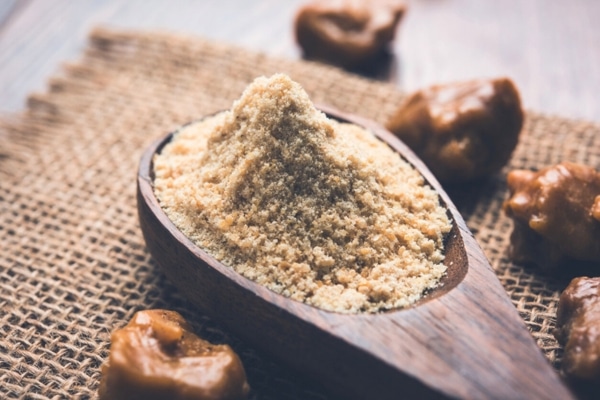Contents
What Can I Substitute for Asafoetida?
Asafoetida, often called “hing,” is a powerful and aromatic spice commonly used in Indian, Middle Eastern, and Persian cuisines. Known for its pungent, sulfur-like smell that mellows into a savory, garlicky flavor when cooked, asafoetida is a key ingredient in many vegetarian dishes. However, finding asafoetida can be challenging outside of specialty stores, and some people may seek substitutes due to dietary restrictions, allergies, or simply a lack of familiarity with this unique spice.
So, what can you substitute for asafoetida? In this article, we’ll explore several substitutes that can replicate the flavor of asafoetida, how to use them effectively, and when these alternatives work best in your recipes.

What Is Asafoetida, and Why Is It Used in Cooking?
Asafoetida is derived from the resin of the Ferula asafoetida plant, a perennial herb native to Central Asia and the Middle East. In powdered form, it is often mixed with a carrier like rice flour or wheat flour to make it easier to handle.
Why Use Asafoetida?
- Flavor Enhancer: Adds depth and umami to dishes, particularly vegetarian and vegan recipes.
- Garlic and Onion Substitute: Used in Jain and Brahmin cuisines, which traditionally avoid garlic and onions.
- Digestive Aid: Known for its carminative properties, it helps reduce bloating and gas, especially in lentil and bean dishes.
Why Might You Need a Substitute for Asafoetida?
There are several reasons why someone might look for an asafoetida substitute:
- Availability: Asafoetida is not always easy to find outside of Indian or Middle Eastern grocery stores.
- Allergies: Many powdered forms contain wheat flour, making them unsuitable for gluten-free diets.
- Dietary Preferences: Some people avoid asafoetida due to its strong aroma or unfamiliar taste.
- Cooking Adaptations: Certain cuisines may require more accessible substitutes for ease of use.
Top Substitutes for Asafoetida
Here are some of the best substitutes for asafoetida, each offering its own flavor profile and benefits.
1. Garlic and Onion
The most straightforward substitute for asafoetida is a combination of garlic and onion. Since asafoetida is often used as a replacement for these ingredients in traditional cuisines, they can be swapped back in when asafoetida is unavailable.
- How to Use:
- 1 clove of garlic and ¼ of a small onion, minced and sautéed, can replace a pinch of asafoetida.
- Flavor Profile: Provides a similar savory and umami flavor.
2. Garlic Powder and Onion Powder
For convenience, garlic powder and onion powder can replicate the flavor of asafoetida in powdered form.
- How to Use:
- Use a 1:1 ratio of garlic powder and onion powder. A pinch of each is usually enough for most recipes.
- Flavor Profile: Offers a milder, more controlled flavor compared to fresh garlic and onion.
3. Leeks or Shallots
Leeks and shallots are milder alternatives to garlic and onion, making them suitable for recipes requiring a subtle flavor.
- How to Use:
- Sauté finely chopped leeks or shallots in oil to bring out their natural sweetness.
- Flavor Profile: Adds a delicate onion-like taste that pairs well with soups, stews, and lentil dishes.
4. Garlic Chives
Garlic chives, also known as Chinese chives, offer a natural blend of garlic and onion flavors.
- How to Use:
- Finely chop and add to dishes as a garnish or during cooking.
- Flavor Profile: A fresh, mild taste that works well in salads, stir-fries, and curries.
5. Fennel Seeds
Fennel seeds have a slightly sweet, anise-like flavor that can mimic some of asafoetida’s aromatic qualities.
- How to Use:
- Lightly toast and crush fennel seeds before adding them to your dish. Use ½ teaspoon fennel seeds for every pinch of asafoetida.
- Flavor Profile: Adds a subtle sweetness and depth.
6. Cumin Seeds
Cumin seeds are another excellent substitute, especially in Indian or Middle Eastern dishes. Their earthy, nutty flavor complements a wide range of recipes.
- How to Use:
- Toast ½ teaspoon cumin seeds in oil as a direct substitute for asafoetida.
- Flavor Profile: Earthy and aromatic, with a hint of bitterness.
7. Celery or Celery Seeds
Celery and its seeds have a slightly bitter, savory taste that can work as a mild alternative to asafoetida.
- How to Use:
- Add a small amount of finely chopped celery or ¼ teaspoon celery seeds to your dish.
- Flavor Profile: Provides a light, herbaceous flavor.
8. Chaat Masala
Chaat masala, a spice blend used in Indian street food, often contains asafoetida as one of its ingredients. It can serve as a flavorful substitute in some recipes.
- How to Use:
- Sprinkle a small amount into curries or lentil dishes.
- Flavor Profile: Tangy and savory, with a hint of spice.
9. Smoked Paprika
For a completely different twist, smoked paprika can add depth and warmth to your dish, mimicking the umami flavor of asafoetida.
- How to Use:
- Use ¼ teaspoon smoked paprika for every pinch of asafoetida.
- Flavor Profile: Adds a smoky, slightly sweet flavor.
10. Nutritional Yeast
For vegans or those looking for a gluten-free option, nutritional yeast is a great alternative that adds a cheesy, umami flavor.
- How to Use:
- Sprinkle 1 teaspoon nutritional yeast into soups, stews, or stir-fries.
- Flavor Profile: Savory and nutty, with a hint of creaminess.
When to Use These Substitutes
Different substitutes work better in specific types of dishes. Here’s a quick guide:
| Dish Type | Best Substitute |
|---|---|
| Lentil Dishes (Dals) | Garlic powder and onion powder, cumin seeds |
| Soups and Stews | Leeks, shallots, or celery |
| Curries | Garlic and onion, chaat masala |
| Gluten-Free Recipes | Nutritional yeast, fennel seeds |
| Quick Fix | Garlic powder and onion powder |
Tips for Choosing the Right Substitute
- Consider Dietary Restrictions: Ensure the substitute aligns with dietary needs (e.g., gluten-free, vegan).
- Match Flavor Profiles: Choose substitutes that complement the other ingredients in your dish.
- Start Small: Add substitutes gradually to avoid overpowering the dish.
Frequently Asked Questions (FAQs)
1. Can I skip asafoetida in recipes?
Yes, but your dish may lack the depth and umami flavor that asafoetida provides. Use a substitute to enhance the overall taste.
2. Is asafoetida gluten-free?
Pure asafoetida resin is gluten-free, but powdered forms often contain wheat flour. Always check the label.
3. Which substitute is closest to asafoetida in flavor?
A combination of garlic powder and onion powder is the closest match to asafoetida’s flavor profile.
4. Can I use asafoetida substitutes in Jain or Brahmin cooking?
Avoid garlic and onion substitutes in Jain or Brahmin recipes. Opt for cumin seeds, fennel seeds, or celery seeds instead.
5. Where can I find asafoetida?
Asafoetida is available in Indian or Middle Eastern grocery stores and online.
Conclusion
Asafoetida is a unique spice that brings depth and complexity to many dishes. While it’s challenging to replicate its exact flavor, substitutes like garlic, onion, cumin, and fennel can help you achieve similar results. Whether you’re adapting recipes for dietary preferences or experimenting with new flavors, these alternatives will ensure your dishes remain flavorful and satisfying.
Would you like more tips on cooking with asafoetida or its substitutes? Let me know in the comments below!

